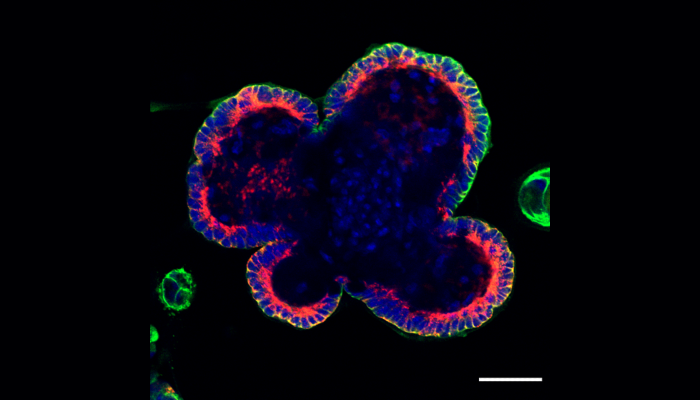Why do IECs Express MHC Class II?
Published: 5 October 2020
A new review involving the Institute's Professor Kevin Maloy has suggested approaches that could be used to better understand how class II major histocompatibility complex molecule expression by Intestinal Epithelial Cells can boost different types of CD4 T cell responses in the gut, which could ultimately lead to better vaccines against intestinal infections.

A new review has suggested approaches that could be used to better understand how class II major histocompatibility complex molecule (MHC) expression by Intestinal Epithelial Cells (IEC) can boost different types of CD4 T cell responses in the gut.
The paper, involving the Institute's Professor Kevin Maloy and published in Immunology, could help identify new strategies to alleviate harmful inflammatory responses and food allergies or to improved vaccines against intestinal infections.
Prof Maloy, an expert in mucosal immunology, explained: "Why IEC express MHC II molecules is a long-standing question.
"The functional consequences can differ drastically depending on the location and context in which the IEC MHC II expression occurs, causing either exacerbation or alleviation of inflammatory responses.
"Understanding the key factors involved could help us utilise MHC II expression by IEC to beneficially modulate local T cell responses in the gut."
One key way we respond to infections is by detecting small protein fragments of invading microbes that are bound by our major histocompatibility complex (MHC) molecules.
There are two types of MHC molecules, called class I and class II, and the latter are required to present microbial fragments to CD4 T cells, key immune cells that co-ordinate a variety of immune responses.
MHC class II molecules are usually expressed by a small subset of immune cells that are specialised in detecting infections and activating appropriate CD4 T cell responses.
However, the epithelial cells that line our intestine (IEC) have also been reported to express MHC II molecules, and the reasons for this remain obscure.
This review outlines the circumstances in which IEC express MHC II molecules and summarises the evidence on how this can affect local CD4 T cells in the gut.
In some cases MHC II expression by IEC enhances inflammatory CD4 T responses, while in others it has the opposite effect by activating regulatory CD4 T cells that inhibit inflammation.
The scientists highlight the key outstanding issues and suggest approaches that could be used to better understand how these opposing effects can occur.
An improved understanding how MHC II presentation by IEC can boost different types of CD4 T cell responses in the gut could lead to new strategies to alleviate harmful inflammatory responses and food allergies or to better vaccines against intestinal infections.
![]()
Why do Intestinal Epithelial Cells Express MHC Class II?
-
Cornelia Heuberger, Johanna Pott, Kevin Joseph Maloy
-
First published: 23 September 2020
Image: Inflammatory conditions drive MHC II expression on IEC.
Courtesy of Cornelia Heuberger.
Stimulation of primary IEC organoids with the inflammatory cytokine IFN-gamma causes increased in expression of MHC II molecules (red staining), which predominantly localise within intracellular vesicles and at the basal surface of the IEC - the normal interface with immune cells. The green staining indicates expression of an IEC marker (E-cadherin) and the blue staining shows the cell nuclei (DAPI).
First published: 5 October 2020

